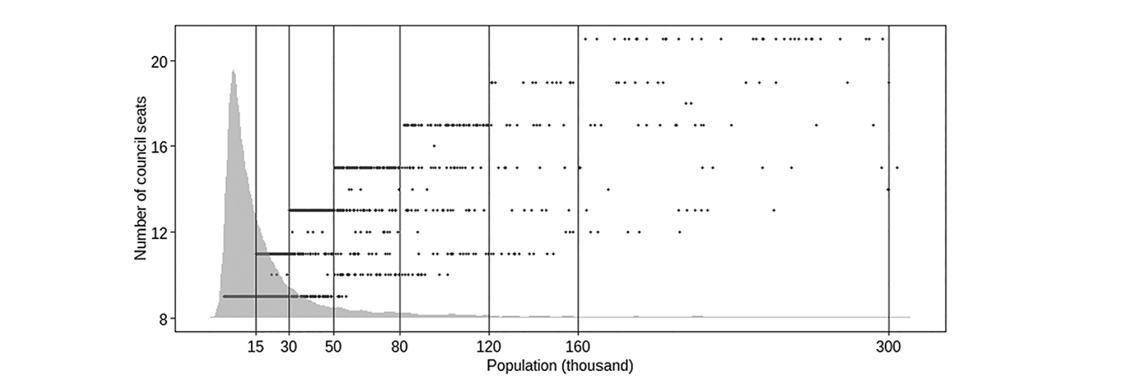Many countries have recently seen an increase in the public debate around the optimal size of their legislatures. Advocates for expanding these chambers often assert that larger assemblies offer improved representation, especially for marginalized groups. Conversely, proponents of smaller legislatures argue that larger bodies incur excessive costs and hinder effective governance.
Scholars have indeed demonstrated that the size of legislatures significantly influences representation, policy outcomes, and governability. However, our understanding of how legislature size impacts elections—the cornerstone of democracy—remains limited. This gap in knowledge is particularly conspicuous in the context of the power dynamics between the executive and legislative branches. For instance, it is widely acknowledged that the electoral fortunes of sitting US presidents are influenced by their relationship with Congress, and the recent impeachment of President Rousseff in Brazil was a direct outcome of her interactions with the lower house.
This article addresses this gap using data from Brazil to study how the size of legislatures impact the electoral strength of incumbents in the executive. In a nutshell, it shows that larger assemblies reduce the electoral performance of incumbents, as they increase the cost of bargaining faced by the executive when dealing with legislators.
Why Study Legislature Size in Brazil?
The first reason is data. Brazil has 5500+ municipalities where power is shared by the executive (mayors) and local councils. What is more, the electoral rules are identical across all locations, and all elections happen on the same day, which facilitates comparisons. The federal electoral authority also provides ample data on candidates, parties, and public policies for all municipalities.
It is also easy to measure the electoral power of local executives in Brazil. This is a context where mayors have ample control over spending in education, public health, and infrastructure projects. This helps them to play an important role for their parties in what we call “reversal coattails,” i.e., where they use their influence to raise votes for their party candidates in gubernatorial and presidential elections.
Finally, it is not easy to separate the impact of legislature size on electoral power from the effect of other factors. For example, simple comparisons between locations with larger and smaller literatures might not be “fair”, given that the different size might reflect dissimilarities in other dimensions, particularly population size. Accordingly, this study benefits from a unique trait of the Brazilian context: the size of local councils is set by federal legislation according to their population level. For example, all cities with more than 15,000 can have up to 11 seats in their assemblies, compared to only 9 for municipalities of less than 15,000. This allows the researcher to compare cities that are very close in population (e.g., 15,100 vs. 14,900) but have different levels of political representation.
Larger Legislatures Indeed Hurt Incumbents. Why?
We use statistical methods that take advantage of the features above to show that larger legislatures indeed hurt sitting incumbents. This study estimates that every additional member in a local council reduces by 5pp the vote share of the national and state candidates endorsed by the mayor.
This study further argues these losses stem from a breakdown in the relationship between mayors and legislators. In Brazil, mayors govern with the support of diverse multiparty coalitions. To sustain the council’s support, they often offer public sector jobs for councilors’ allies and access to other resources from office. The support of councilors is crucial for the mayor’s ability to raise votes for their party candidates in gubernatorial and presidential elections.
In this context, larger councils raise this transaction cost for mayors when the electoral incentives of the council and the mayor are misaligned at the state or national levels. This leads councilors to support their own party candidates rather than the ones backed by their allied mayor. It also leads to local coalitions that are less stable and more likely to be built around ideological considerations instead of patronage.
Implications for Other Contexts
Overall, these findings provide a framework to understand how changes in institutions, such as the size of legislatures, can increase electoral competition, particularly in young democracies in the developing world where electoral power is often sustained by this type of patronage.
Note
Figure 1: Number of council seats in Brazilian municipalities. Each dot represents one municipality. Vertical lines show the population levels at which the cap on council size changes. The shaded area shows the density of the observations. For ease presentation, the plot excludes 1% of all municipalities, which have populations above 310,000. There is total of 5,428 municipalities in the plot.
This blog piece is based on the forthcoming Journal of Politics article “Larger Legislatures and the Cost of Political Brokerage: Evidence from Brazil” by Anderson Frey.
About the Author
Anderson Frey is an Assistant Professor of Political Science at the University of Rochester. He studies elections and public policies in democracies of developing countries. You can find more information about his research here.



